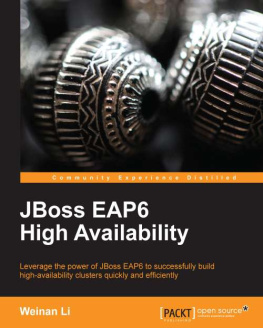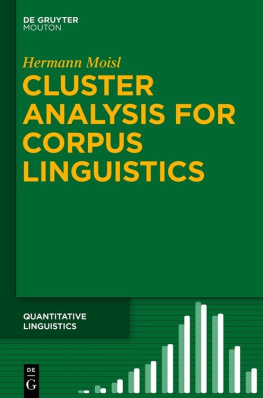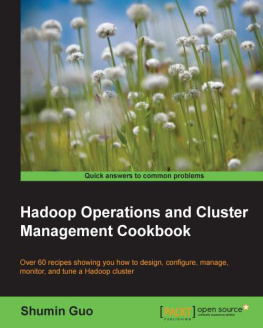James C. Bezdek - Elementary Cluster Analysis: Four Basic Methods that (Usually) Work
Here you can read online James C. Bezdek - Elementary Cluster Analysis: Four Basic Methods that (Usually) Work full text of the book (entire story) in english for free. Download pdf and epub, get meaning, cover and reviews about this ebook. City: Gistrup, year: 2022, publisher: River Publishers, genre: Science. Description of the work, (preface) as well as reviews are available. Best literature library LitArk.com created for fans of good reading and offers a wide selection of genres:
Romance novel
Science fiction
Adventure
Detective
Science
History
Home and family
Prose
Art
Politics
Computer
Non-fiction
Religion
Business
Children
Humor
Choose a favorite category and find really read worthwhile books. Enjoy immersion in the world of imagination, feel the emotions of the characters or learn something new for yourself, make an fascinating discovery.
- Book:Elementary Cluster Analysis: Four Basic Methods that (Usually) Work
- Author:
- Publisher:River Publishers
- Genre:
- Year:2022
- City:Gistrup
- Rating:4 / 5
- Favourites:Add to favourites
- Your mark:
Elementary Cluster Analysis: Four Basic Methods that (Usually) Work: summary, description and annotation
We offer to read an annotation, description, summary or preface (depends on what the author of the book "Elementary Cluster Analysis: Four Basic Methods that (Usually) Work" wrote himself). If you haven't found the necessary information about the book — write in the comments, we will try to find it.
The availability of packaged clustering programs means that anyone with data can easily do cluster analysis on it. But many users of this technology dont fully appreciate its many hidden dangers. In todays world of grab and go algorithms, part of my motivation for writing this book is to provide users with a set of cautionary tales about cluster analysis, for it is very much an art as well as a science, and it is easy to stumble if you dont understand its pitfalls. Indeed, it is easy to trip over them even if you do! The parenthetical word usually in the title is very important, because all clustering algorithms can and do fail from time to time.
Modern cluster analysis has become so technically intricate that it is often hard for the beginner or the non-specialist to appreciate and understand its many hidden dangers. Heres how Yogi Berra put it, and he was right:
In theory theres no difference between theory and practice. In practice, there is ~Yogi Berra
This book is a step backwards, to four classical methods for clustering in small, static data sets that have all withstood the tests of time. The youngest of the four methods is now almost 50 years old:
- Gaussian Mixture Decomposition (GMD, 1898)
- SAHN Clustering (principally single linkage (SL, 1909))
- Hard c-means (HCM, 1956, also widely known as (aka) k-means)
- Fuzzy c-means (FCM, 1973, reduces to HCM in a certain limit)
The dates are the first known writing (to me, anyway) about these four models. I am (with apologies to Marvel Comics) very comfortable in calling HCM, FCM, GMD and SL the Fantastic Four.
Cluster analysis is a vast topic. The overall picture in clustering is quite overwhelming, so any attempt to swim at the deep end of the pool in even a very specialized subfield requires a lot of training. But we all start out at the shallow end (or at least thats where we should start!), and this book is aimed squarely at teaching toddlers not to be afraid of the water. There is no section of this book that, if explored in real depth, cannot be expanded into its own volume. So, if your needs are for an in-depth treatment of all the latest developments in any topic in this volume, the best I can do - what I will try to do anyway - is lead you to the pool, and show you where to jump in.
James C. Bezdek: author's other books
Who wrote Elementary Cluster Analysis: Four Basic Methods that (Usually) Work? Find out the surname, the name of the author of the book and a list of all author's works by series.

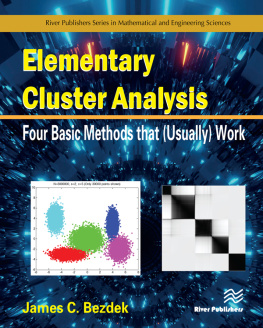


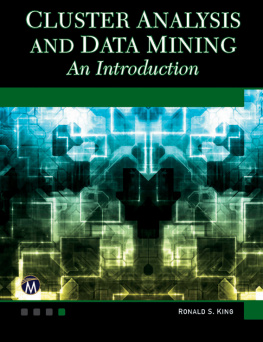
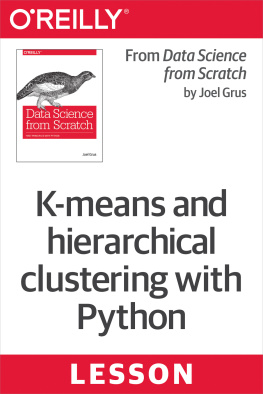
![David Natingga [David Natingga] - Data Science Algorithms in a Week - Second Edition](/uploads/posts/book/119607/thumbs/david-natingga-david-natingga-data-science.jpg)
